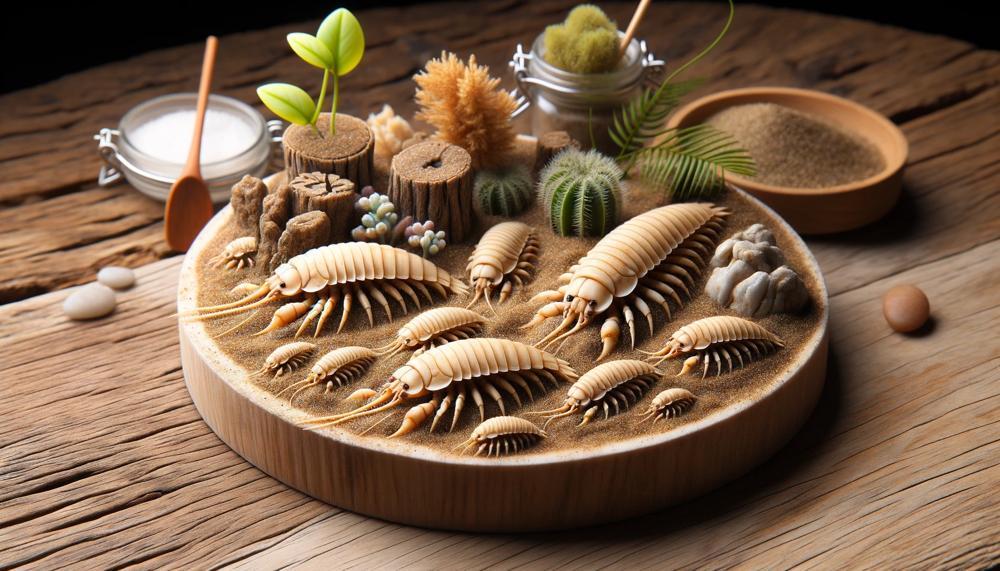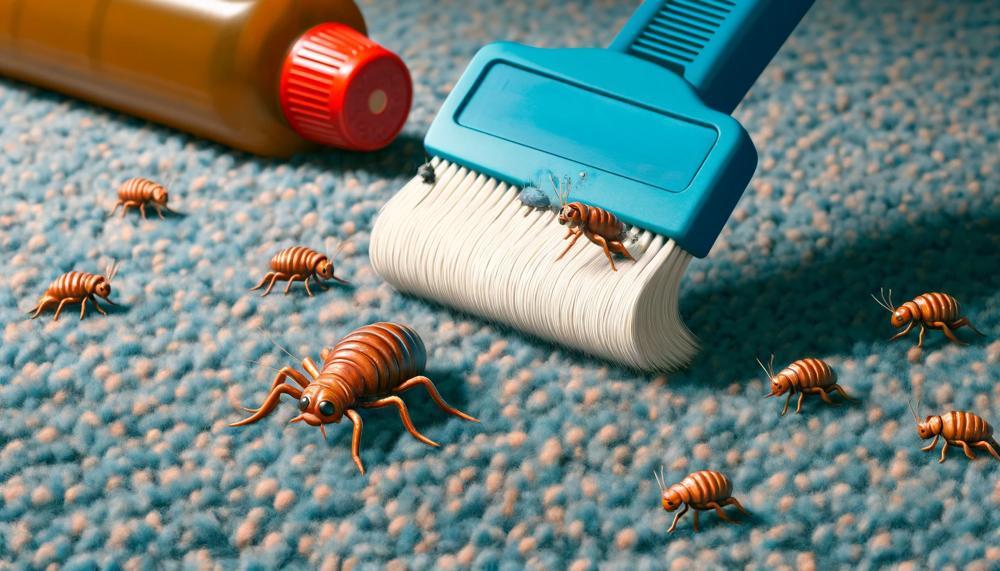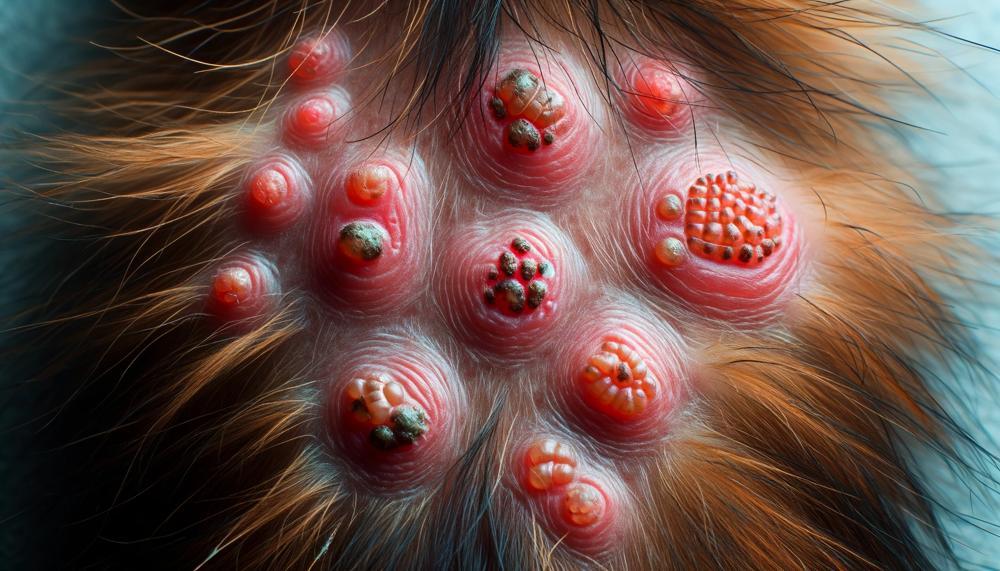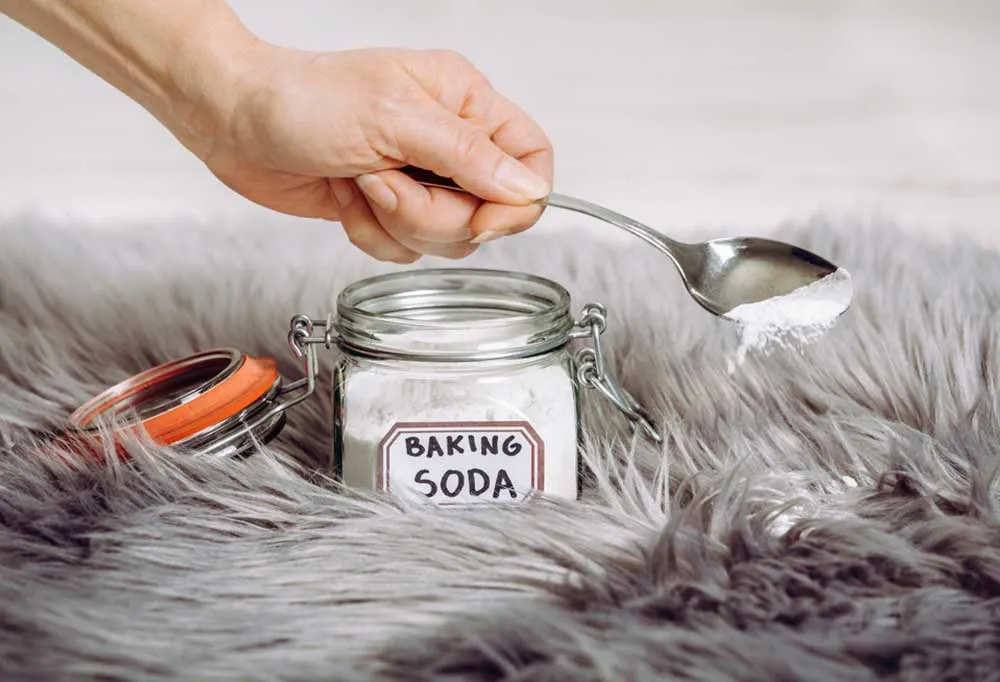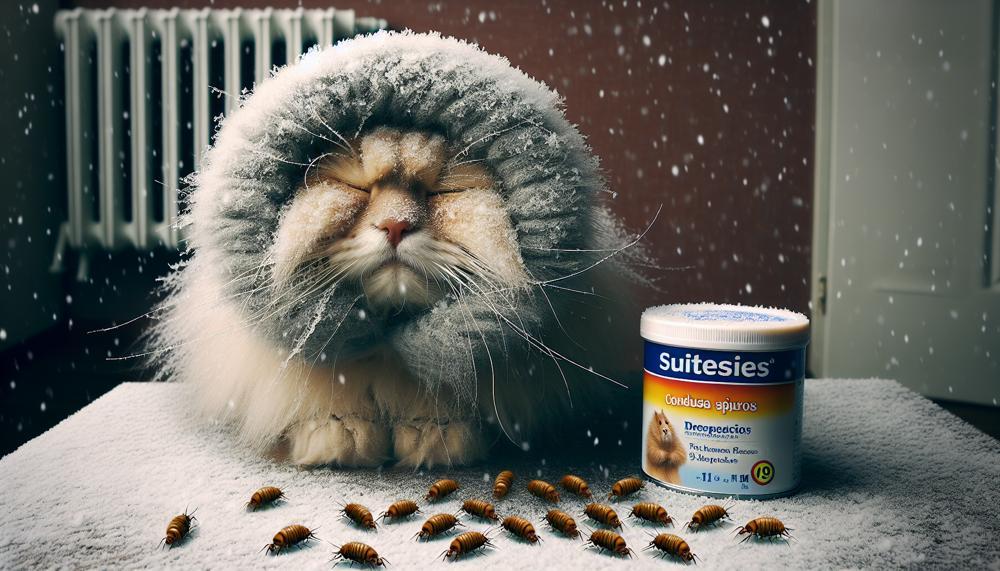Did you know that sand fleas, despite their tiny size, can be a colossal nuisance, impacting not just your leisurely beach days but also your home’s comfort and your pets’ well-being? These pesky critters, more akin to a scene from a horror movie than a beach vacation, can wreak havoc in the most unexpected ways. But fear not, as the battle against these miniature beasts doesn’t have to involve harsh chemicals or expensive exterminators. Nature itself has equipped us with effective tools to fight back, and this guide is your map to those natural treasures.
In the following paragraphs, we’ll dive deep into the world of sand fleas, uncovering not just the extent of their impact but also how you can reclaim your space, naturally.
So, how do you get rid of sand fleas naturally?
Sand fleas can survive in many environments, so the best way to get rid of them is to eliminate their food source. Here are some natural ways to do that:
- Diatomaceous earth: This fine powder is made from the fossilized remains of algae, and is non-toxic to humans. Sprinkle it in areas where you suspect flea activity.
- Salt: Sprinkle salt on breeding grounds, as sand fleas can’t survive salt and will dehydrate and die.
- Steam clean: Steam cleaners use steam to kill fleas because they can only withstand certain temperatures and can easily drown.
- Baking soda: Sprinkle baking soda on carpet or furniture, let it sit for at least 30 minutes, then vacuum it up. The baking soda absorbs oils and dries out the fleas.
So, let’s dive in now.
Table of Contents
Know Thy Enemy
Understanding the foe is half the battle won, they say. So, when squaring up against sand fleas, it’s crucial to arm oneself with knowledge about these tiny adversaries.
Let’s dissect the common characteristics and behaviors of sand fleas, providing homeowners a strategic advantage in the natural eradication campaign.
Sand Flea Identification
| Size | Typically less than 1 cm in length |
| Colour | Light brown or grey, blending seamlessly with sandy environments |
| Body Shape | Flat, aiding in their clandestine lifestyle |
| Activity Time | Mostly nocturnal, but can exhibit day-time activity |
| Jumping Ability | Can leap up to 20 times their body length thanks to powerful hind legs |
| Survival Skill | Possess a ‘bursa’ for water retention, thriving in dry conditions |
Behavioural Traits
- Nocturnal Nuances: Their prime time is under the cloak of night. This insight is pivotal for homeowners, as interventions may be more effective during twilight hours.
- Jumpy Little Critters: Their signature leap is not just for show; it’s a survival tactic. Spotting these high jumpers during the day could indicate an infestation.
- Drought Defiers: Thanks to their special organ, the bursa, they’re not just beach bums. They can hold court in your sandy backyard too.
- Feeding Frenzy: Though they’re not bloodthirsty vampires, their bites can still turn a serene beach day sour. They feast on organic matter but won’t shy away from nibbling on humans.
- Lured by Light: Like moths to a flame, they’re attracted to bright lights. It’s wise to reconsider that midnight beach volleyball tournament.
Natural Battle Plan
Armed with this intel, homeowners can tailor their strategies effectively. Turning off outdoor lights or opting for bug-repellent yellow bulbs could reduce nightly visits.
During peak activity times—dawn and dusk—be extra vigilant and perhaps consider natural repellents like essential oils (peppermint and lavender) to keep them at bay.
Spread Some Diatomaceous Earth
Diatomaceous Earth (DE) is a powdery substance that’s nothing short of a miracle from Mother Nature when it comes to dealing with those irksome sand fleas.
It’s like the old gunslinger of the pest world; silent but deadly, especially to sand fleas. Now, let’s break down exactly how this natural marvel works its magic.
The Mechanics Behind DE’s Flea-Fighting Prowess
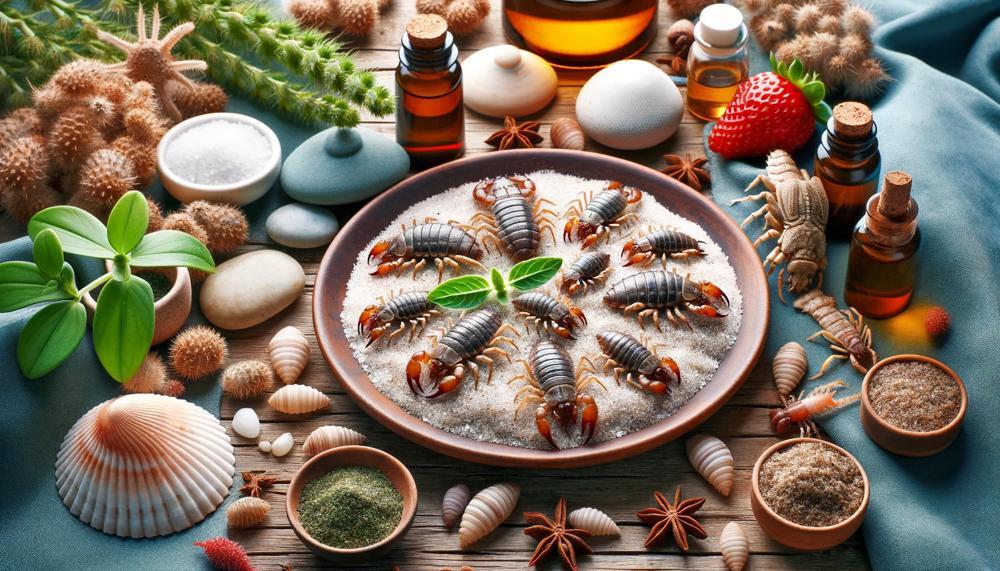
Diatomaceous earth isn’t your average powder. It’s made from the fossilized remains of tiny aquatic organisms known as diatoms. Under a microscope, DE is sharper than a tack, which spells bad news for sand fleas.
| Action | Effect on Sand Fleas | Outcome |
| Absorption | DE sucks the moisture out of sand fleas. | Dehydrated and dead fleas. |
| Microscopic Edges | Cuts through the flea’s exoskeleton. | Fatal wounds lead to death. |
| Barrier Creation | Prevents fleas from entering treated areas. | Keeps new fleas at bay. |
Introduce a Natural Predator
To tackle the pesky issue of sand flea infestations in your home, introducing natural predators into the environment stands out as a savvy and eco-friendly strategy. By fostering a habitat that welcomes these allies, you can significantly reduce the sand flea populace without resorting to harsh chemicals.
| Natural Predator | Diet Includes | How They Help |
| Nematodes | Flea larvae and pupae | These microscopic warriors parasitize and eliminate fleas at their most vulnerable stages. |
| Frogs and Toads | Insects (including fleas) | By feasting on a variety of insects, they naturally curb the flea population. |
| Spiders | Fleas, among other insects | Spiders capture fleas in their webs or hunt them down, effectively reducing their numbers. |
| Lizards and Beetles | Fleas and other small insects | As part of their diet, they consume fleas, thereby aiding in population control. |
| Army Ants | Fleas and other insects | Their relentless foraging can decimate flea populations in their path. |
| Birds | Insects including fleas, ticks, and lice | Birds act as natural pest controllers by feeding on fleas and other insects. |
To make your yard a haven for these natural predators, focus on creating diverse habitats. For instance, maintaining a small pond or wet area can attract frogs and toads, while leaving some leaf litter and logs can provide shelter for spiders, beetles, and lizards. Planting native flora will also encourage birds to visit your garden.
Remember, while introducing natural predators is a step in the right direction, it’s part of a broader strategy to manage sand flea populations. This approach should be complemented with regular cleaning, vacuuming, and the use of diatomaceous earth as mentioned in the previous section.
Use Essential Oils
Getting rid of sand fleas in your house doesn’t have to be a battle fought with harsh chemicals. Instead, let’s turn our attention to something a bit more natural and gentle, yet equally fierce in the fight against these tiny invaders – essential oils.
Drawing from the wisdom of nature, certain essential oils act as formidable foes against sand fleas, offering a blend of repellant and sometimes even lethal powers to these pests.
| Essential Oil | Properties | Usage Method |
| Cedar | Top-notch flea assassin; kills on contact. | Dilute with water and spray directly on infested areas. |
| Eucalyptus | Packs an anti-inflammatory punch with insecticidal bravado. | Add a few drops to your cleaning water, or use in diffusers. |
| Geranium | A mighty repellent that’s gentle on pets. | Blend with carrier oil and apply to pet collars or bedding. |
| Lavender | Soothes the soul while showing fleas the exit. | Mix with water for a spray, or use in laundry wash for bedding and linens. |
| Peppermint | Cools bites and sends pests packing. | Dilute and spray onto surfaces; great for window sills and entry points. |
| Lemongrass | Makes fur shine while keeping fleas at bay. | Diffuse in the home or apply diluted mix to pet beds. |
| Citronella | The bouncer of the insect world; repels more than just fleas. | Use in outdoor candles or diffusers to protect your home’s perimeter. |
| Tea Tree | A diluted powerhouse for flea repulsion. | Add to shampoos or cleaning waters, but use sparingly and never directly on pets. |
| Rosemary | Antiseptic qualities heal bites and freshen spaces. | Create a boiling infusion and spray after cooling, or use in diffusers. |
| Neem | An unsung hero with a potent punch against fleas. | Mix with palatable oils for a homemade flea-repelling spray. |
Attack When the Time Is Right
To combat sand fleas naturally and effectively, pinpointing the prime time for an attack is crucial. The key lies in understanding the behavior and environment of these pesky critters. Sand fleas are most vulnerable when the sea recedes, revealing their attempts to burrow back into the moist sand.
This moment presents a golden opportunity for you to strike and rid your home of these unwelcome guests without resorting to harsh chemicals.
Identifying the Best Time to Attack
- Observe the Tides: The receding tide is your cue. Sand fleas become exposed as the water pulls back, scrambling to find shelter.
- Early Morning or Late Evening: These times often coincide with lower light levels and cooler temperatures, further increasing your chances as sand fleas are less active and easier to catch.
- After a Storm: Post-storm conditions can disorient sand fleas, making them easier targets as they recover from the turbulence.
Tactical Approach
| Action | Reason | Benefit |
| Use Natural Repellants | To create an inhospitable environment for sand fleas. | Keeps sand fleas at bay without harming the environment. |
| Mechanical Removal | Gather them during vulnerable times (receding tide). | Directly reduces sand flea population. |
| Maintain Dry Conditions | Sand fleas thrive in moist environments. | Less attractive habitat for sand flea colonization. |
When Nature Calls
Remember, attacking when the time is right doesn’t mean waging war at every opportunity. It means observing, understanding, and then acting in harmony with nature’s cues to address the sand flea problem efficiently. The blend of timing, natural repellents (such as cedar, eucalyptus, and lavender mentioned previously), and physical removal strategies forms a comprehensive defence against these pests.
By aligning your efforts with these natural rhythms and employing environmentally friendly methods, you’re not only protecting your home but also preserving the delicate balance that allows us to coexist with our natural surroundings.
Prevent New Infestations
To fend off new invasions of sand fleas in and around your home, a blend of vigilance and natural strategies can be your best line of defense. Here’s how you can keep these tiny trespassers at bay:
Keep Your Home and Surroundings Clean
- Vacuum Regularly: Especially after visits to the beach, thorough vacuuming of floors, furniture, and any beach gear can remove any hitchhiking sand fleas.
- Clean Beachwear: Washing beachwear and towels immediately after use will help ensure sand fleas don’t find a new home with you.
Utilize Natural Repellents
| Natural Repellent | Application | Effectiveness |
| Lavender Oil | Apply diluted oil on skin or diffuse in home. | Repels various insects including fleas. |
| Cedarwood Chips | Place around home perimeter and in gardens. | Acts as a deterrent for fleas and other pests. |
| Diatomaceous Earth (Food Grade) | Spread thinly around home entry points. | Dehydrates and kills fleas’ exoskeletons upon contact. |
Modify Outdoor Spaces
- Maintain Dry Conditions: Ensure your yard doesn’t have standing water or overly moist areas, as dry conditions are less appealing to sand fleas.
- Cultivate Flea-Repelling Plants: Planting flea-repellent flora like lavender, marigolds, and lemongrass can add an extra layer of protection.
Personal Protection
- Wear Protective Clothing: At the beach, opt for long sleeves and trousers during dawn and dusk when sand fleas are most active.
- Use Natural Insect Repellent: Natural repellents containing oils like citronella, eucalyptus, and tea tree oil can provide protection without harsh chemicals.
By integrating these natural methods into your routine, you can create an unwelcoming environment for sand fleas, keeping your home a fortress against infestation.
Conclusion
Nature has a lot of options for getting rid of sand fleas that are both effective and good for the earth.
The methods listed cover a wide range of ways to deal with these problems, from learning about the enemy’s habits to using diatomaceous earth’s drying properties. The entrance of natural predators into an environment shows how powerful biological control can be. Essential oils, on the other hand, can keep pests away and calm the mind.
If you go on the attack when sand fleas are most likely to be active, you will get the best results from your efforts. By keeping your space clean and using natural repellents, you can strengthen your defenses and make it impossible for invaders to come back.
By using these methods, you not only free your peace and comfort from sand fleas, but you also help protect the delicate natural balance of our planet in the process.

